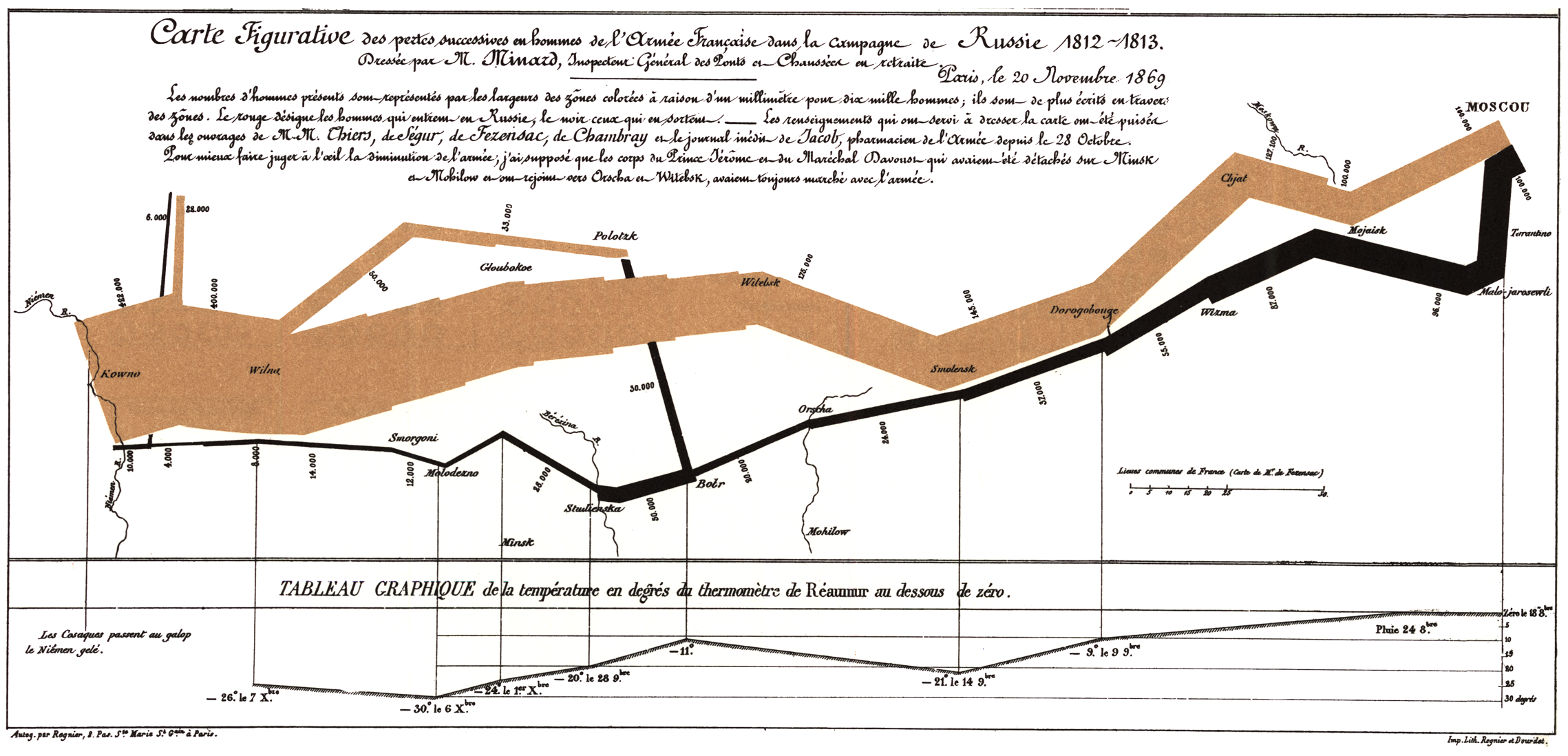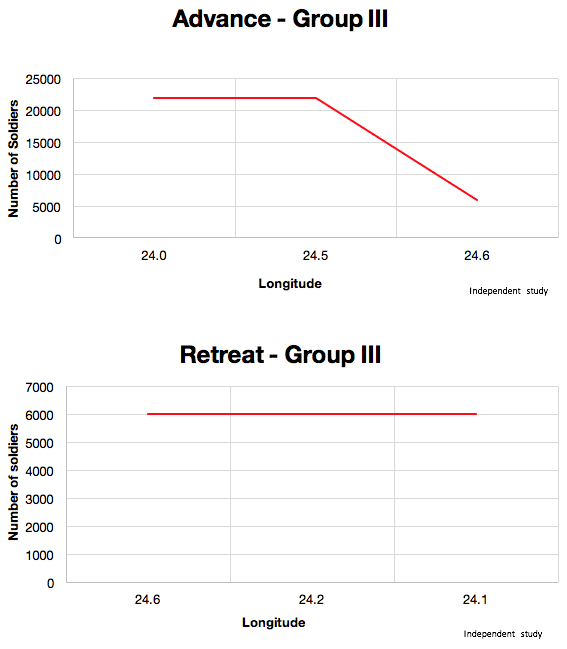 The Duke of Wellington famously said, “I used to say of him [Napoleon] that his presence on the field made the difference of forty thousand men.” Napoleon’s tactical ability was second to none but it is essential to look at the rationale behind his great triumphs which were often attributed to his engineers on the field. Charles Joseph Minard was one such jewel; he was an engineer by profession and was recognised for his contribution in the field of cartography and information graphics.
The Duke of Wellington famously said, “I used to say of him [Napoleon] that his presence on the field made the difference of forty thousand men.” Napoleon’s tactical ability was second to none but it is essential to look at the rationale behind his great triumphs which were often attributed to his engineers on the field. Charles Joseph Minard was one such jewel; he was an engineer by profession and was recognised for his contribution in the field of cartography and information graphics.
Around 200 years ago the world changed forever as the Battle of Waterloo, in which Napoleon’s army was defeated by the allied Prussians and British forces, took place in Waterloo, a town south of Brussels, in Belgium. Although the world as we see it politically and culturally would look totally different if Napoleon had the won the battle of Waterloo but he did pave the way for the coming of concrete democracy and the notion of nation states He established the “Code law Napoléon”, the basis of law in France and other neighbouring countries, he also introduced an uniform system of education along with various other socio-economic schemes.
Graphique de Joseph Minard [Graph by Charles Minard]

Statistician Edward Tufte described this chart in his work ‘The Visual Display of Quantitative Information’ as “The best statistical graphic ever drawn”. The graphic is also a map as it depicts the advance into Russian territory (1812) and the following retreat in the winters of 1813 by Napoleon’s Grandee Armée, which was destroyed due to the lack of provisions, the chilling Russian winter and the scorched tactics by the Russian army. As a statistical chart, the map unites six different data steps:
- Geography
- Army’s course
- Army’s direction
- Number of soldiers remaining
- Temperature
- Time
Analysis
In the year 1812, Napoleon was doing pretty good as he had western Europe under his control, Austria was at the receiving end. He wanted to capture the United Kingdom but he was unable to breach the defences of the British Isles so his plan was to place an embargo on them, forcing the other European nations to stop trade with the United Kingdom, he wanted to politically and economically starve the UK. The Czar of Russia, Alexander was felt insecure about Napoleon’s power as he was consolidating Europe so he refused to participate in this embargo.
Angry at this decision, Napoleon gathered a massive army of more than 400000 soldiers, crossed the river Niemen and marched towards Russia’s spiritual capital Moscow. While Russian troops didn’t have the numerical advantage, they did have a plan and it was to keep retreating as Napoleon’s troops moved forward, burning everything as they pass to ensure that the French forces lacked provision during the chilling Russian winter. By the time, Napoleon reached Moscow during October, he knew he had to retreat.
The map shows the vulnerability and the tactful flaw in Napoleon’s judgment of underestimating the Russian defences; he entered Russia with around 442,000 men, captured Russia’s spiritual capital Moscow with around 100,000 men, wandered around the city for some time and escaped barely with around 10000 shivering soldiers. Napoleon never recovered from this blow and would be beaten decisively at Waterloo two years later. A century later Hitler repeated Napoleon’s mistake by underestimating the vastness of Russian territory. The data base is available on Napoleon’s troop numbers by location (longitude), organization by groups and direction.
The wonder of Minard’s graph is how easily he linked the multiple dimensions of locations, troop strength and temperature into a single entity.
The Battle of Waterloo
On June 1815, he crushed the Prussian army under Gebhard Leberect von Blucher at Ligney, and sent around men 34,000 to make the Prussian’s retreat. On June 18, he led his remaining 74,000 against the Duke of Wellington’s 68,000 allied armies, which had taken up strong position 12 miles south of Brussels, near the small village of Waterloo, he made a fatal blunder which determined the fate for the day. Napoleon waited until mid-day to give command for the attack and the delay in fighting eluded their pursuers [Prussians], time to march back and join forces with the allied army.
He repeatedly commanded his cavalry to break the centre of the allied forces but by then the die had been cast, the Prussians took full advantage and attacked the east flank throwing the French troops into panic. French casualties were quite heavy, Napoleon returned to Paris to abdicate and decided to leave France before the counterrevolutionary forces could gather support against him. He died in 1840 due to stomach cancer and his body was returned to Paris, where a grand funeral was held through the Arc de Triomphe.















































































